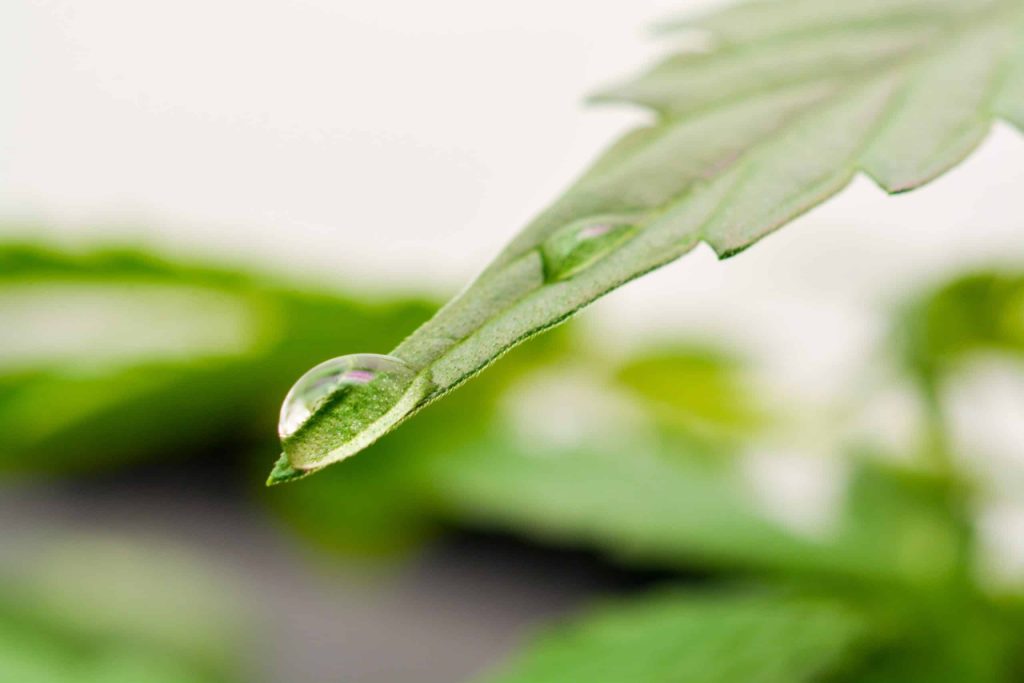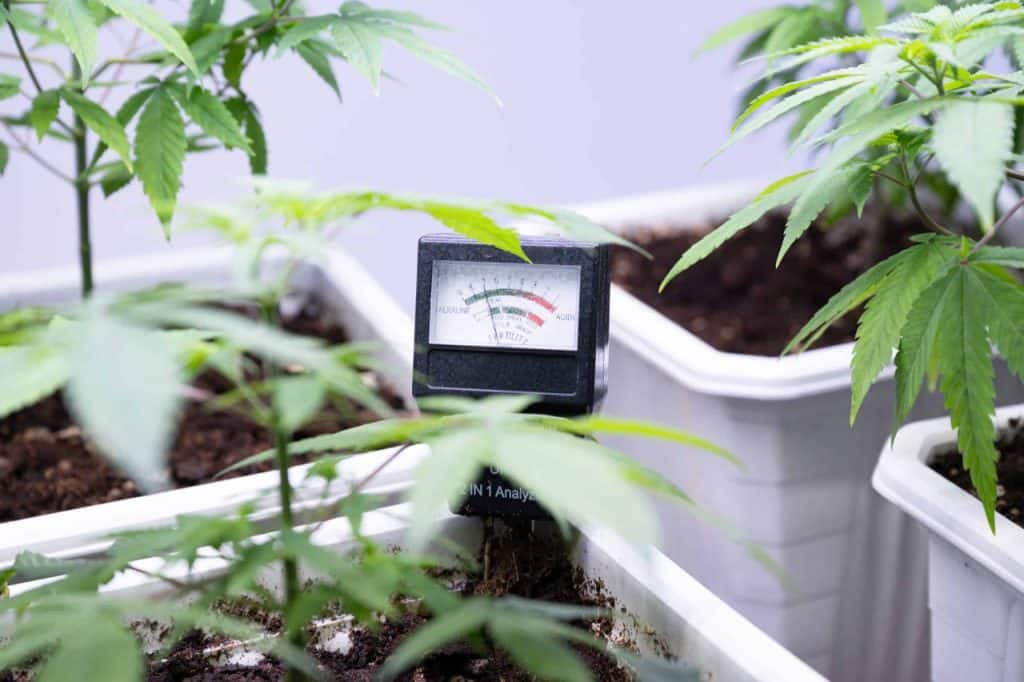Free Tropical Runtz seeds on orders over $150!
Growing cannabis is difficult enough without dealing with the additional difficulty of a nutrient lockout. Nutrient lockout is a problem, but inexperienced growers don’t usually recognize it for what it is. It’s not uncommon for them to take counterproductive measures to find a solution. Please keep reading to understand what nutrient lockout is and, more importantly, how to treat it and prevent it in the future.
In the cultivation process, a nutrient lockout is a frequent issue. It’s more aggravating when you’re just starting as a cultivator and have no idea what’s going wrong. Plants cannot absorb the nutrients you provide when they suffer from a nutrient lockout. It is like the nutrients are being “shut out” from your plants.
This condition is a nutrient lockout when plants cannot take in the vital nutrients they require to thrive. In most cases, this results from a chemical interaction between the fertilizer solution, the growth medium, and your plants.
There are several origins of nutrient restriction. The pH of your water, soil, or fertilizers might all be to blame, but they’re not the only ones. In addition, cannabis plants might undergo a chemical reaction if too much fertilizer is applied, particularly in the root zone. Finally, nutrient lockout might be brought on by accumulated salt deposits in your soil using mineral (non-organic) fertilizers.
In a typical case of a nutrient lockout, all the necessary nutrients are available, but the plant cannot absorb them. If the pH isn’t quite right, your cannabis plants won’t consume the nourishment you offer them.
It’s impossible to overestimate the significance of pH in cultivation. Nutrient lockout becomes more likely if the pH level fluctuates outside this sweet spot. It is because each nutrient has a preferred concentration. Most plant life thrives in a pH range of 5.5 to 6.3, where all nutrients are absorbed adequately.
To put it another way, plants may prefer one set of nutrients over another if the pH is excessively high or low. Iron and manganese, but not calcium or magnesium, are easily absorbed in a pH of 5. Below a pH of 5, calcium and magnesium are poorly absorbed by plant roots, increasing the likelihood that the plant may die from a lack of these nutrients.
When first-time farmers see their plants’ symptoms—such as yellowing leaves or slow growth—they often attribute them to a lack of nutrients. It is not too far from the truth, as the plants aren’t benefiting from the nutrients in the growth medium and therefore experiencing many of the same problems as undernourished plants.
However, rather than correcting the underlying problem—be it pH, salt accumulation, etc.—growers may be tempted to administer even more nutrient solutions, believing this would remedy the issue. So what happens? Your pot plants start to do considerably worse.
At this point, you should be able to understand how complicated this situation may get. Growers unfamiliar with nutrient lockout are more likely to give their plants the wrong diagnosis. They believe they need to give their plants extra nutrients since they seem hungry. Naturally, this will contribute more salts and nutrients to the environment, negatively impacting the pH and resulting in an even greater loss of nutrients. Therefore, take care not to overfeed your plants since doing so at this stage might make the situation much more severe.
If your crops suffer from nutrient lockup, flushing them is your best bet. It can help flush out any salt buildup in your growth media that might contribute to the nutrient lockup you’re experiencing. Methods may vary according to the hydroponic system you’re using. Still, you’ll generally pause your regular feeding schedule and cleanse the growth medium to remove the salt and other mineral accumulation leading to the nutrient lockout.
However, although many gardeners use water alone to cleanse their plants, this is not the best practice.
Farmers often use nutrient-free water to cleanse their crops. Although this isn’t ideal, it may be useful. First, it might deprive your plants of nutrients when they need them the most, resulting in stunted flowering and lower resin production—not ideal if harvest time is approaching.
Some farmers resort to flushing cannabis nutrients, which may remove just a fraction of the residues from plants. Unfortunately, the plant nourishment released by these outdated flush solutions may lead to smaller harvests and less harvest power. That’s not all; they won’t give you the thorough, value-boosting scrub you need.

For this reason, Flawless Finish was created by Advanced Nutrients. It’s the only flushing mix developed and field-tested to ensure thorough, yield-boosting cleanliness for the particular plants you cultivate. Use a solution of Flawless Finish and clean water to cleanse your plants. This method yields crops almost completely free of extra salts and other loads, as shown by hundreds of tissue samples obtained from the precise sort of plants you produce.
Once you’ve completed the flushing procedure, you should no longer suffer a nutrient lockout and may resume resupplying your reservoir with nutrients and supplements as per your usual feeding plan.
It is far easier to prevent nutrient lockout than reverse it once it has been discovered. It increases the likelihood of profitable growth by adhering to certain basic procedures.
When growing cannabis, nutrient lockup might occur if you don’t feed your plants enough. However, severe trimming might lessen the plant’s need for nutrients. A smaller crop means you may get by with less of what the plants require to thrive and produce fruit. However, excessive pruning may also harm your plants’ health, so be careful not to prune them too much.
Your plant may have problems if you make any sudden adjustments. It is much simpler for the plants to adjust when changes are carefully presented. The nutritional balance shifts while switching to a 12/12 light cycle. A weed plant’s requirement for nitrogen decreases as it begins to flower since it has already used so much of it to produce its leaves. However, it increases its need for phosphorus and potassium.
Cannabis plants may suffer from a sudden shift in nutrients and lighting; thus, it is best to transition slowly to adjust to their new environment. To smooth the transition, you may do the same with the lighting cycle, shifting from 18/6 to 12/12 over a week.
If you’ve ever flushed your growth medium, you know that only clean water will do (plus, you should also consider a Flawless Finish). It implies that you must supply your plants with only reverse osmosis (RO) water to ensure their purity. Since the pH of RO water can be controlled, it simplifies pH regulation and maintenance.
With the right organic nutrients, the nutrient lockout may be avoided completely. Minerals, such as salt, found in inorganic nutrient solutions and fertilizers may accumulate over time, altering the pH of your growth medium and perhaps causing the nutritional lockout.
In contrast, organic fertilizers are far less likely to lead to nutrient lockout since they don’t contain as much salt. However, also with organic fertilizers, regular flushes are always a recommended practice.
Acidic soil is ideal for the cannabis root zone. Overly acidic soil prevents root absorption of nutrients, leading to nutritional lockout. Because prevention is always preferable to treatment, keeping an eye on your soil’s pH to ensure it remains within an ideal range is an excellent approach to keep nutrients from being locked out.
The pH range for growing cannabis in soil is 6.0–7.0, whereas the ideal interval for producing cannabis in hydroponic systems is 5.5–6.5. Get a good pH meter and maybe even an EC (electrical conductivity) meter to check your growth medium’s nutrient and salt levels and ensure you remain within these parameters.

The optimum time to measure the pH level in soil growth is immediately after watering. Tools perform better in damp soil because alkaline water is the primary cause of pH changes. Because hydroponic plants are more susceptible to damage, keeping a close eye on the pH levels in their growing medium is crucial.
You may avoid nutrient lockout entirely by being proactive and taking the necessary precautions. It is because it is easy to maintain a “sweet spot” for pH levels in a development environment by paying great attention to the choices made regarding fertilizer, water, and growing medium.
Nevertheless, errors may and often do occur. In these situations, it is vital to flush your garden to get rid of the stored nutrients and fix the nutrient lockout problem. Regardless of the circumstances, you should better understand Nutrient Lockout and how to fix it at this point.





Offers
This product is not for use by or sale to persons under the age of 18. This product should be used only as directed on the label. It should not be used if you are pregnant or nursing. Consult with a physician before use if you have a serious medical condition or use prescription medications. A doctor’s advice should be sought before using any hemp products. All trademarks and copyrights are property of their respective owners and not affiliated with nor do they endorse this product. These statements have not been evaluated by the FDA. This product is not intended to diagnose, treat, cure or prevent any disease. By using this site you agree to follow the Privacy Policy and all Terms & Conditions printed on this site. All products contain less than 0.3% Cannabinoid-compliant with applicable Federal Laws. Please make yourself aware of any and all applicable laws regarding hemp in your jurisdiction. Premium Cultivars accepts no liability or responsibility regarding germination laws in any specific locale state or national jurisdictions.THCA products are not available for shipment to the following states: Hawaii, Idaho, Minnesota, Oregon, Rhode Island, Utah, Vermont *Note: Products with Total THC content above 0.3% must not be shipped to these states.
We want to help you get your hands on the seeds you want, take 20% off your next purchase when you enter your email below!
We want to help you get your hands on the seeds you want, take 20% off your next purchase when you enter your email below!